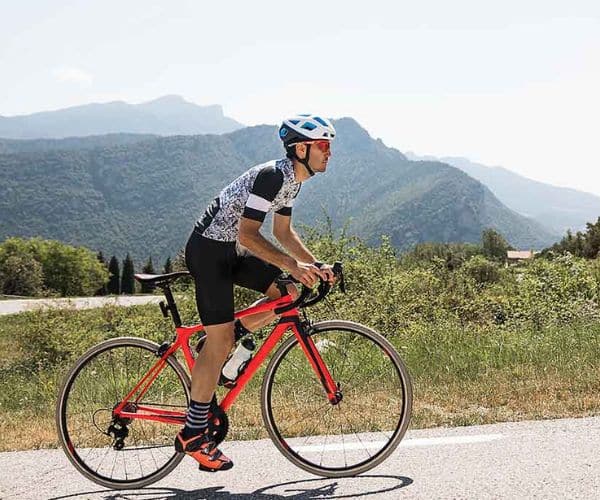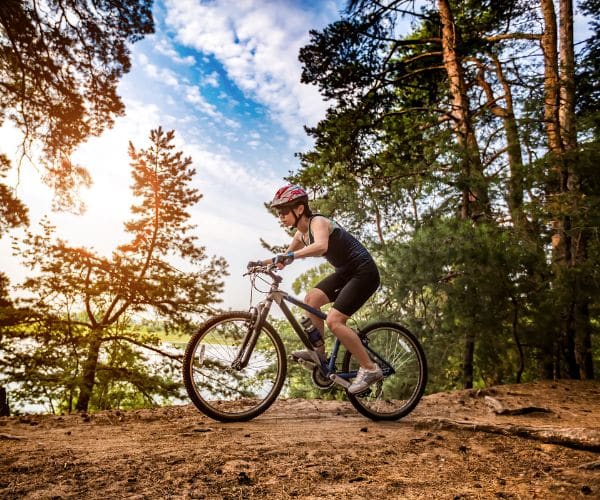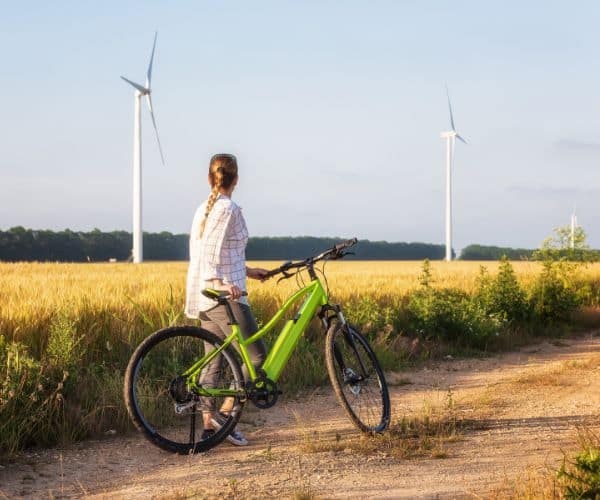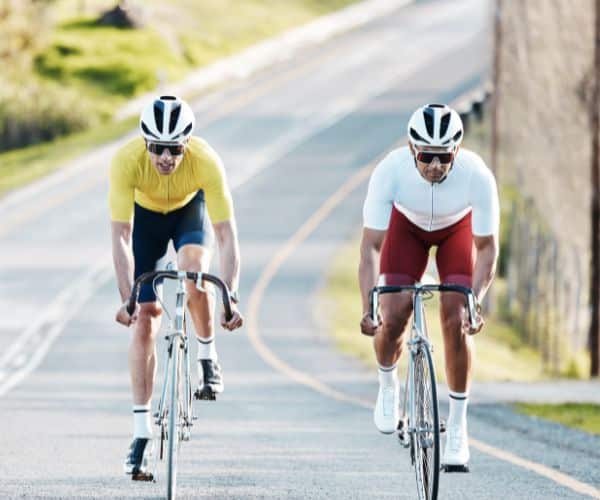Cycling is an incredibly versatile sport and hobby, offering something for everyone, from adrenaline junkies and endurance riders to commuters and weekend explorers. Understanding the different cycling disciplines can help you find the perfect fit for your lifestyle, fitness goals, or sense of adventure.
Exploring the world of cycling

Cycling isn’t just one activity, it’s a collection of unique experiences. From road racing to rugged mountain trails, each discipline has its own style, equipment, and community. Whether you’re riding for fun, transport, or competition, there’s a cycling discipline that’s right for you.
Popular cycling disciplines to try

Here’s a breakdown of the most popular cycling disciplines, what they involve, and how to get started.
1. Road cycling – speed, endurance and scenic routes
What it is: Road cycling involves riding on paved roads and is one of the most popular and accessible cycling disciplines. It can range from casual weekend rides through the countryside to competitive long-distance races and timed challenges. Riders often focus on speed, stamina, and efficiency, making it ideal for improving cardiovascular fitness. Club rides, sportives, and solo training are all part of the road cycling culture.
Beginner tip: Start with shorter rides on quieter roads and focus on building your endurance gradually.
Essential gear:
Lightweight road bike
Padded cycling shorts
Clip-in or flat pedals
Front and rear lights
2. Mountain biking – off-road adventure
What it is: Mountain biking is all about exploring rugged and natural terrain, such as woodland trails, rocky paths, and mountainous routes. It’s a physically demanding discipline that challenges your balance, technical skills, and confidence. Riders can choose from various formats, including cross-country, downhill, enduro, and trail riding, each requiring various levels of technical ability and fitness. It’s perfect for those who enjoy adrenaline-filled outdoor challenges.
Beginner tip: Choose beginner-friendly trails and get used to using your gears and brakes efficiently.
Essential gear:
Hardtail or full-suspension MTB
Helmet with good coverage
Gloves and knee pads
Tyres with strong grip
3. Cyclo-cross – the ultimate mixed-terrain challenge
What it is: Cyclo-cross is a unique hybrid of road cycling and off-road riding. Races take place on short circuits that include grass, gravel, mud, sand, and various obstacles like barriers and steep inclines. Riders often need to dismount and carry their bikes for short distances. Cyclo-cross is known for being physically intense and technically demanding, typically run in autumn and winter seasons, with races lasting around 30–60 minutes. It’s fast, muddy, and highly competitive.
Beginner tip: Practise mounting and dismounting smoothly. This can save a lot of time in a race.
Essential gear:
Cyclo-cross bike with knobby tyres
Lightweight clothing
Waterproof shoes
Pressure gauge for tyre adjustments
4. Track cycling – pure speed on the velodrome
What it is: Track cycling is a high-speed discipline performed on a purpose-built velodrome, an indoor oval track with steep banking. It involves lightweight, fixed-gear bikes without brakes, and riders compete in a variety of events that test both speed and tactics. These include sprints, pursuits, time trials, and team races. The discipline demands explosive power, precision, and strategic timing, making it a favourite among elite cyclists and Olympic athletes.
Beginner tip: Try a taster session at a local velodrome, many offer beginner-friendly introduction classes.
Essential gear:
Fixed-gear track bike (usually provided)
Aero helmet
Tight-fitting kit
Cycling shoes with cleats
5. BMX – tricks, speed, and airtime
What it is: BMX (Bicycle Motocross) is an action-packed cycling style that includes both racing on short, dirt tracks and freestyle riding in skateparks or urban environments. BMX racing is a sprint event over jumps and berms, while freestyle focuses on tricks, flips, and stunts. It’s fast-paced and often appeals to younger riders, but it’s also a serious competitive sport with international championships. BMX is all about agility, creativity, and control.
Beginner tip: Learn basic balance and handling skills before attempting jumps or tricks.
Essential gear:
BMX bike (racing or freestyle type)
Full-face helmet (for racing)
Elbow and knee pads
Durable shoes
6. Urban and commuter cycling – everyday efficiency
What it is: Urban and commuter cycling is the practical side of the sport, focused on using a bike for daily travel, whether that’s getting to work, university, or running errands. It’s a cost-effective, eco-friendly alternative to driving or public transport, especially in cities with good cycling infrastructure. This discipline is more about convenience and consistency than speed, making it perfect for people looking to build cycling into their lifestyle.
Beginner tip: Plan safe routes using bike lanes or quieter streets; always use lights and reflective gear.
Essential gear:
Hybrid or commuter bike
Front and rear lights
Lock and pannier bag
Waterproof jacket
7. Gravel riding – the best of both worlds
What it is: Gravel riding bridges the gap between road cycling and mountain biking. It typically takes place on unpaved roads, bridleways, forest paths, and light off-road terrain, offering both speed and adventure. This discipline has surged in popularity due to its versatility, gravel bikes are designed to be fast on tarmac but tough enough for rougher surfaces. It’s ideal for long-distance riding, bikepacking, and exploring areas away from traffic.
Beginner tip: Start with smoother gravel routes and adjust tyre pressure for comfort and grip.
Essential gear:
Gravel bike with wider tyres
Multi-tool and puncture kit
Comfortable saddle
GPS or map app for off-road navigation
8. Cycle touring and bikepacking – long-distance exploration
What it is: Cycle touring and bikepacking are all about adventure, exploration, and self-sufficiency. Riders travel long distances over multiple days, often through scenic or remote areas. Touring tends to follow roads and uses bikes equipped with panniers and racks, while bikepacking is more off-road, using lighter, more compact luggage attached to the frame. It’s a slow-paced, rewarding discipline focused on experience rather than speed.
Beginner tip: Pack light, test your gear in advance, and plan for regular rest stops.
Essential gear:
Touring or adventure bike
Panniers or frame bags
Camping gear (for bikepacking)
Navigation tools
9. E-biking – power-assisted pedalling
What it is: E-biking uses electric motors to assist your pedalling, making cycling easier and more accessible. E-bikes are popular with commuters, older riders, or anyone who wants to travel further without overexerting themselves. They’re especially useful for tackling hills, headwinds, or long distances. E-biking still involves physical effort, but with support that allows riders to go further with less fatigue. Some models are tailored for road, off-road, or mixed use.
Beginner tip: Get familiar with battery range and learn to manage power settings to extend ride time.
Essential gear:
E-bike with suitable range
Charger and spare battery (if long distance)
Visibility accessories
Strong lock (e-bikes are theft targets)

Common FAQs

What are the main cycling disciplines?
Road cycling, mountain biking, cyclo-cross, track cycling, BMX, commuting, gravel riding, touring, and e-biking are among the most recognised types.
Which cycling discipline is best for fitness?
Road cycling and mountain biking are both excellent for cardiovascular and muscular endurance. Gravel riding also provides a great all-round workout.
What’s the difference between gravel riding and mountain biking?
Gravel riding focuses on speed and distance over less technical terrain, while mountain biking involves more technical skills and rougher off-road paths.
Is cycling good for beginners?
Absolutely. Starting with short rides on flat terrain, such as road or urban cycling, can help build confidence and fitness gradually.

Why insurance matters for every cyclist
Cycling, whether for leisure, sport, or travel, offers incredible freedom and adventure, but it’s important to be prepared for the unexpected. Accidents, injuries, theft, or last-minute disruptions can happen even on the most carefully planned rides. That’s where specialist cycling insurance comes in.
SportsCover Direct offers flexible policies designed specifically for cyclists, with options for single trips or annual multi-trip cover. Whether you’re commuting through the city, tackling a mountain trail abroad, or entering a competitive event, our cycling insurance can cover medical expenses, repatriation, trip cancellations, and the loss or damage of your bike and equipment. If you already have standard travel insurance, our bolt-on cycling cover provides additional protection for those moments your main policy might overlook.
Getting covered is quick and simple. You can request a tailored quote in just a few clicks, and if you have questions, our friendly, UK-based team is on hand to help. With the right insurance, you can focus on enjoying the ride knowing that if something goes wrong, you’re financially protected.
This blog has been created as general information and should not be taken as advice. Make sure you have the correct level of insurance for your requirements and always review policy documentation.